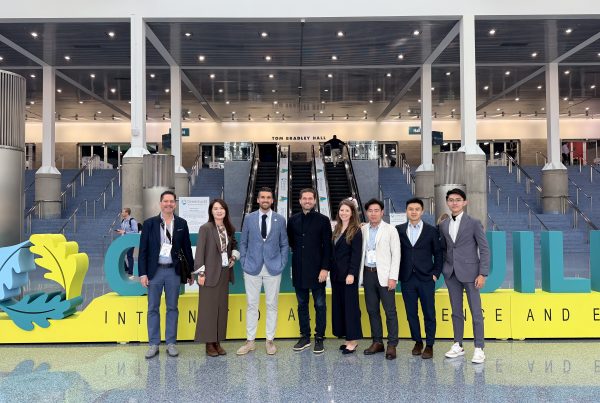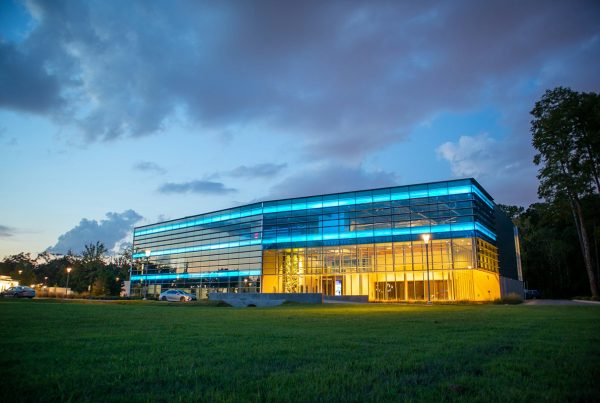2022 will be a year of innovation in the construction industry, with several cutting edge technologies going mainstream. Some of the biggest innovations from the last couple of years, such as 5G and IoT, are powering a new generation of construction technologies that are on track to define the year ahead. From innovations in safety to entirely new building methods, these construction technologies will make the greatest impact on the industry in 2022.
1. Construction Wearables
Wearables have become a staple of everyday life over the last several years, especially smartwatches. This technology is finally making a breakthrough into construction, with innovations well beyond the everyday wristwatch. Construction wearables have boomed recently, bringing a variety of form factors and feature sets to the industry.
Construction wearables are making safety both connected and convenient. In addition to construction-grade smartwatches, safety wearables can be found in several shapes and sizes, including vests, hard hats, and even boots. For example, smart hard hats can detect fatigue and even help prevent fatigue-related accidents through brainwave monitoring. Ultra-compatible clip-on wearables can easily be connected to any safety vest to detect things like air quality, toxins, or gas.
2. 3D Printing
One of the most exciting new technologies sweeping the construction industry is 3D printing. This has evolved beyond 3D printing tools or plastic pieces and grown into an entirely new construction platform. Today’s construction-grade 3D printers can print concrete and similar materials with speed, accuracy, and consistency. The key draw for 3D printing, however, is a notably lower price and drastically shorter build time than traditional construction is capable of.
In 2022, 3D printing is on track to hit the market as a top choice for housing and other smaller projects. In fact, the world’s largest 3D-printed neighborhood will be breaking ground in Austin, Texas, in 2022. Projects like this help boost the sustainability of the construction industry and, as an added benefit, dodge supply chain issues that are leaving many traditional projects backed up. This combination of benefits makes 2022 the perfect time for 3D-printed construction to take off.
3. Virtual Reality and Augmented Reality
AR and VR had a big year in 2021. The Oculus Quest 2 headset brought high-quality virtual reality to the masses and Facebook, now under the company name Meta, released groundbreaking details into the future of augmented and virtual reality in the “metaverse.” These technologies are already changing daily life for many. VR and AR will be revolutionary for the construction industry in 2022.
Both AR and VR have multiple applications in construction, which will expand the capabilities of professionals on-site and in the office. For example, VR could be used in the project planning phase to get a first-person view of what a structure will look like. With the right software, designers could actually “walk” through a virtual mockup of the building.
Similarly, AR could be used in the field to take hands-free measurements or project a virtual mockup onto a physical structure. This becomes especially useful in training for new hires, where AR and VR could be used to give new employees a safe, hands-on learning experience.
4. Drones
Drones have been on the rise for a while now in construction, but they will have an increased impact in 2022 due to a couple of factors. The construction industry continues to grapple with labor shortages while demand continues to go up and pressure increases due to the supply chain crisis. Drones can ease several of the challenges that the current climate has created in the industry.
Drones more than make up for their initial cost by being capable of numerous applications and high flexibility. For example, drones can be used for site surveys, cutting down survey times from days to mere hours with a crew of one. Similarly, site security becomes far simpler and more intelligent with roaming surveillance drones that offer dynamic monitoring around the clock. As working remotely becomes more popular for those in the office, drones offer a way for stakeholders and project managers to oversee progress on-site without any necessary travel.
5. Artificial Intelligence
Artificial intelligence (AI) is on track to go mainstream in construction alongside the adjacent technologies that benefit most from it. A prime example of this is drone surveillance. AI security software could analyze security drone footage in real-time and autonomously detect suspicious activity. This allows for constant site surveillance without any need for dedicated monitoring staff.
Going well beyond security, AI has numerous high-value applications in construction. Drone footage can also be used to analyze a site for safety risks, which can keep risk assessment personnel safe during the analysis process. Similarly, AI can be used in the planning phase of projects to help improve designs and optimize spending and resource usage, allowing construction companies to make the most out of every dollar.
6. Sustainable Materials
While not a single technology, sustainable materials are going to be center-stage in 2022. Sustainability has risen to the forefront of public concern over the past couple of years. With the 2021 bipartisan U.S. infrastructure bill set to launch countless new construction projects in the year ahead, sustainability will become an even bigger deal in construction. In fact, the Biden Administration has expressed a commitment to sustainability within the infrastructure bill and its many initiatives.
For the construction industry, sustainable materials are about more than meeting green building standards. The state of the global supply chain going into 2022 leaves much to be desired, but sustainable materials may offer a respite. Some projects have begun experimenting with hybrid concrete and even concrete replacements that are made of plastic waste. Materials engineers have even found that these concrete mixtures can be far more durable than traditional concrete.
For example, sustainable materials don’t have to be something new or cutting edge at all. Architects at the Georgia Institute of Technology in Georgia, discovered this firsthand while designing and building the revolutionary Kendeda Building. This environmentally friendly building was constructed in part using 25,000 linear feet of 2×4’s salvaged from movie sets around Atlanta. This not only saved money but also allowed the project to avoid supply chain delays and price increases.
The Year Ahead in Construction Tech
The construction industry is on the brink of an exciting technological renaissance that could go a long way toward attracting new hires. The technologies advancing the industry are improving the everyday work experience, both in the office and on-site. Construction is a resilient industry. These technologies just go to show that in the face of the world’s biggest challenges, construction doesn’t slow down. It innovates.











